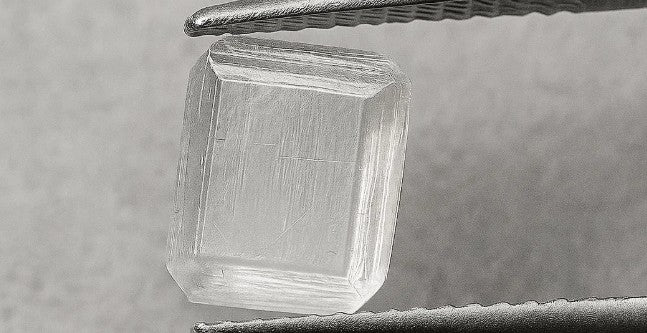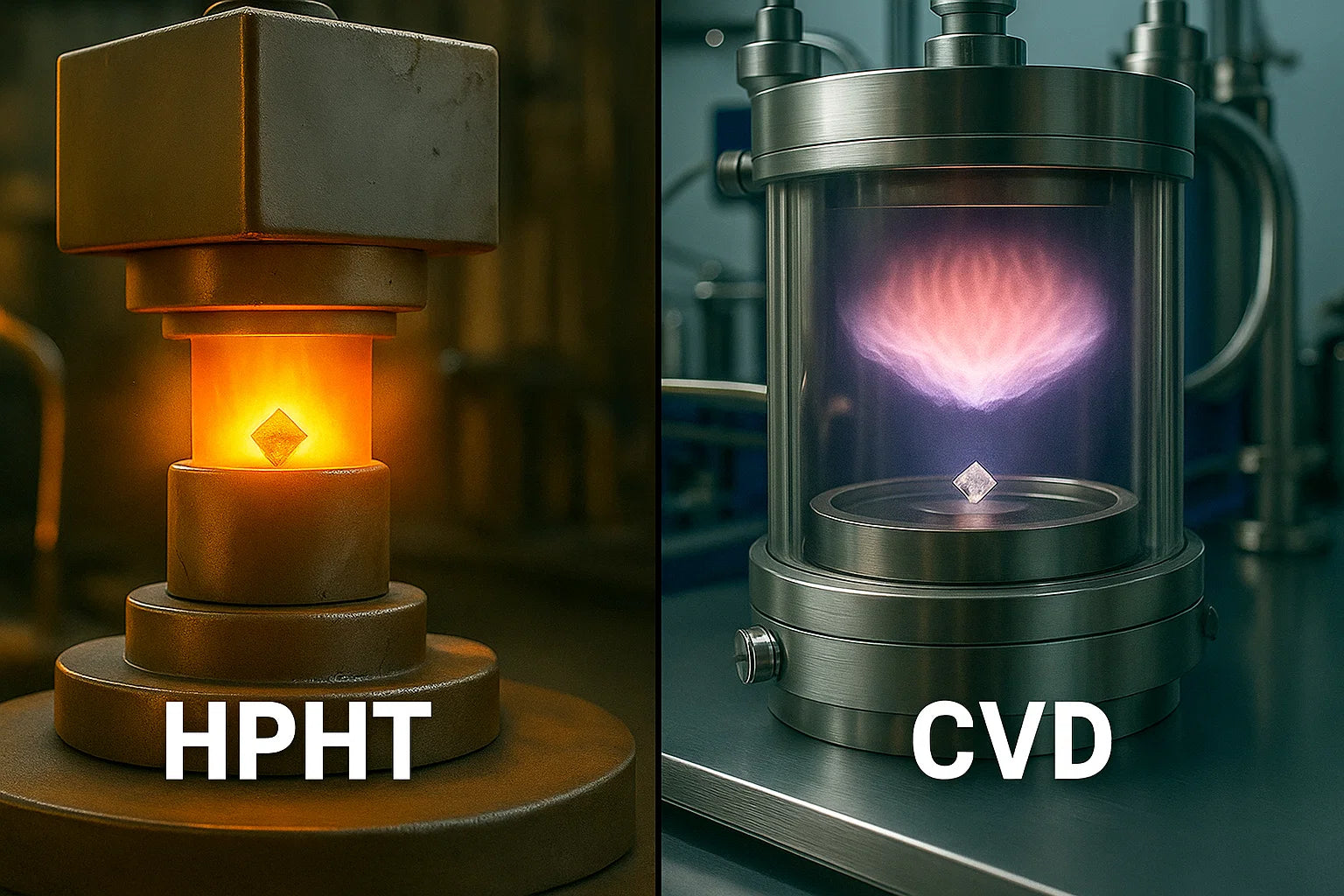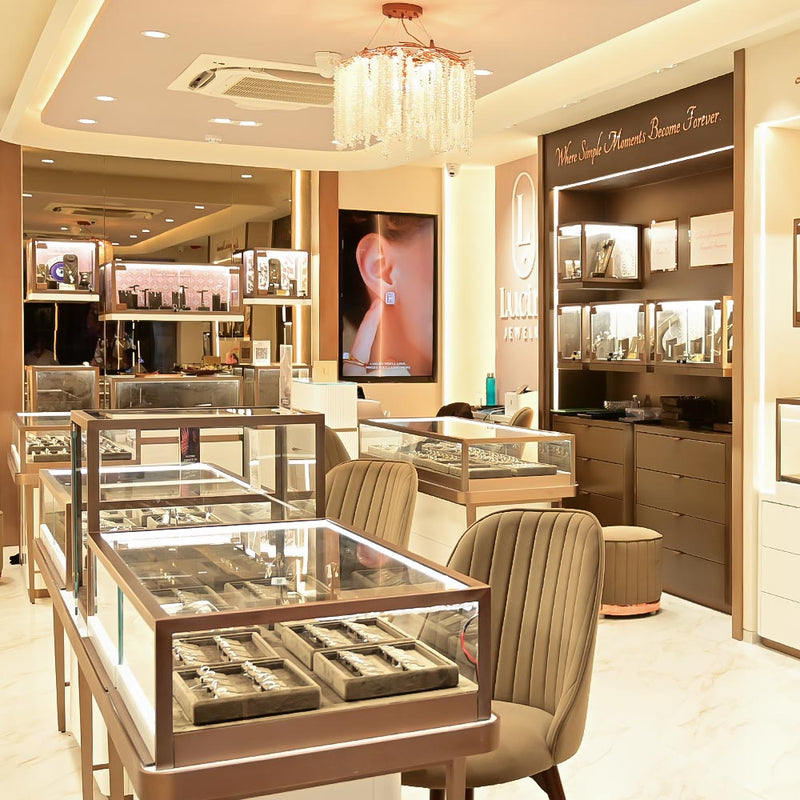Most people have heard of Lab Grown Diamonds. Fewer know how they’re actually made. The term “CVD” might sound technical, and it is, but the real process? It’s surprisingly human.
The tools are advanced for sure, but growing a diamond in a Lab, especially using the CVD method, is less about pushing buttons and more about patience, precision, and paying attention when things shift even slightly.
First, What Does CVD Even Mean?

CVD stands for Chemical Vapor Deposition. While it might sound like something straight out of a chemistry textbook, the process is far more refined and far more fascinating. It’s not just science, it’s craftsmanship guided by technology.
In a CVD Lab, the journey begins with one key ingredient: carbon, the same element found in natural diamonds. But instead of forming underground under extreme pressure over millions of years, the carbon is given a carefully controlled environment where it can grow into a diamond over time.
Inside a sealed chamber, scientists create the ideal conditions for diamond formation. There’s no dramatic force or explosion, just a quiet, controlled setting with regulated temperature, pressure, and a precise gas mixture. Bit by bit, carbon atoms begin to arrange themselves into the structure of a diamond, forming slowly, layer by layer, over the course of days or weeks.
The Role of the Seed: Small, but Critical

Every diamond, whether it comes from under the Earth or from a Lab, starts somewhere. In CVD, it starts with a seed.
It’s not magic. It’s a tiny slice of an existing diamond, thin, flat, and carefully chosen. Think of it like a starter for sourdough bread. The seed holds the atomic blueprint for what comes next.
Before anything begins, this seed is cleaned thoroughly. If you don’t remove every trace of dust or film, things can go sideways. Growth won’t be smooth and clarity might be compromised. So before the real work starts, technicians prepare the surface with almost obsessive detail.
Inside the Chamber: Where Diamonds Begin to Grow

The cleaned seed is placed inside a vacuum chamber and air is pulled out. Gases, usually hydrogen and methane are brought in, then the heat goes up and the temperatures hit over 800°C. At that point, energy (microwaves or lasers, depending on the setup) activates the gas mixture. The plasma forms, glowing faintly and within it, carbon atoms are released from the methane.
These carbon atoms begin to settle on the seed, one by one. They copy the seed’s crystal pattern as they stack. It’s like watching something invisible being built with invisible bricks.
You can’t rush it. A few atoms at a time, the structure grows slow, quiet, and strangely elegant.
Why Human Judgment Still Matters

It’s easy to assume that the chamber does all the work. Press a button, wait a week, and out comes a diamond.
Not even close.
The process is sensitive, sometimes the diamond stops growing, sometimes carbon accumulates in uneven layers. One chamber might grow two great stones back-to-back, and then suddenly a cloudy one. There’s no perfect formula.
That’s where technicians come in. They monitor the process constantly, adjust the balance of gases, shift the timing and restarts growth when it falters. No algorithm handles it all. There’s decision-making involved in the process.
Patience Is Built Into the Process
This isn’t like flipping a switch. A usable diamond takes weeks to grow. And even then, not all of it will end up in the final gem.
Much of the outer material is removed when the stone is cut. What’s left is the heart of the growth, clean, strong portion that holds together after polish. So when someone wears a CVD diamond, they’re wearing only the best part of what took weeks to build.
How CVD Stands Apart from HPHT

There’s another method used in Labs called HPHT (High Pressure, High Temperature). It mimics the natural formation of diamonds underground, using enormous force.
HPHT works, but it comes with quirks like more metallic inclusions, less consistency in color, and sometimes a bit more unpredictability in shape.
CVD, on the other hand, offers:
- Better control during growth
- Fewer internal flaws
- Improved color grades in many cases
- Flatter crystal shapes, which are easier to cut
It’s not about one method being right and the other wrong. It’s about what the process is intended to achieve.
Why This Process Should Matter to You

When someone picks a diamond, they’re not just choosing a sparkle, they’re choosing origin, intention and transparency.
With Lab Grown Diamonds, especially ones grown using CVD, there’s a record of every step. No mining, no forced labor, no guesswork as you know how it was made and where it came from, and what kind of care was taken during its growth.
For some, that kind of clarity matters just as much as the sparkle itself.
A Diamond Made with Intention
You don’t have to be a scientist to appreciate what happens inside a CVD chamber. You just have to care that your diamond didn’t appear out of nowhere. It grew slowly, under supervision, with people making judgment calls the whole way.
It might not be the story people expect when they think of diamonds but for many, it’s the story that makes the most sense.




